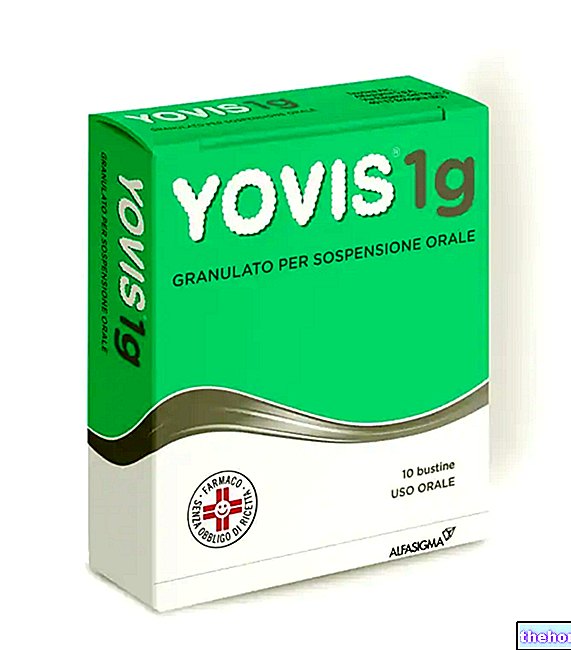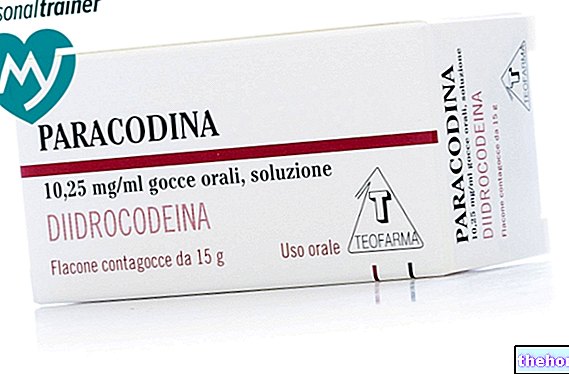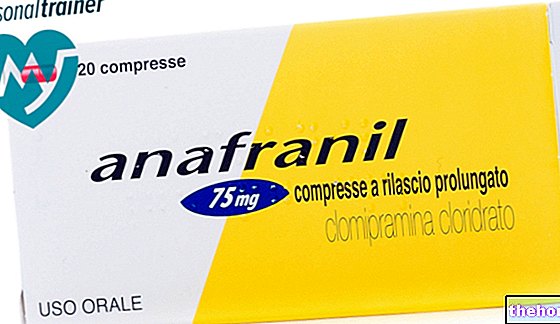Active ingredients: Sucralfate
SUCRAMAL 1 g tablets
Package inserts of Sucramal are available for pack sizes:- SUCRAMAL 1 g tablets
- SUCRAMAL 2 g granules for oral suspension
Why is Sucramal used? What is it for?
Medicines for peptic ulcer and gastroesophageal reflux disease
Gastric ulcer, duodenal ulcer. acute gastritis, chronic symptomatic gastritis, NSAID gastropathies (non-steroidal anti-inflammatory drugs), reflux esophagitis.
Contraindications When Sucramal should not be used
Hypersensitivity to the active substance or to any of the excipients. Do not administer during any antibiotic treatment with tetracyclines to avoid the formation of complex salts with consequent inactivation of the antibiotic. Sucralfate should not be administered to premature babies.
Precautions for use What you need to know before taking Sucramal
Sucramal should be used with caution in patients with chronic renal failure. In such patients the excretion of absorbed aluminum may be impaired. Use in pregnancy should be carefully considered and reserved in cases where it is clearly necessary (see section Special warnings).
There have been reports of bezoar formation after sucralfate administration in patients with gastrointestinal motility disorders following surgery, drug therapy, or disorders that reduce motility.
A well-known study conducted in France in infants who received sucralfate found that 73% of those treated showed severe digestive problems and 36% presented with an occlusive syndrome that required medical treatment.
Cases of aspiration of the sucralfate tablet with subsequent respiratory complications have been reported during post-marketing surveillance. Therefore, sucralfate tablets should be used with caution in patients with conditions that may impair swallowing, such as recent or prolonged intubation, tracheostomy, previous aspiration, dysphagia or any other condition that may affect the pharyngeal and cough reflex or reduce coordination and oropharyngeal motility.
The use of Sucramal with tetracyclines is not recommended (see section Interactions).
Use in children and adolescents under the age of 14
The use of Sucramal in children below 14 years of age is not recommended due to insufficient data.
Interactions Which drugs or foods may change the effect of Sucramal
Sucralfate should not be administered during any treatment with tetracyclines to avoid the formation of complex salts with consequent inactivation of the antibiotic. In case of concomitant administration of sucralfate and phenytoin, warfarin, digoxin and fluoroquinolone antibiotics (for example ciprofloxacin and norfloxacin), the rate absorption of these drugs is reduced. It is therefore advisable to interpose an interval of at least two hours between the intake of sucralfate and that of other drugs.
Tell your doctor or pharmacist if you are taking or have recently taken any other medicines, even those without a prescription.
Warnings It is important to know that:
Pregnancy and breastfeeding
As there are no well-controlled studies in pregnant women, it should only be used if strictly necessary in the event of pregnancy. It is not known whether sucralfate is eliminated in human milk, however administration of the product during lactation should be done with caution.
Ask your doctor or pharmacist for advice before taking any medicine.
Effects on ability to drive and use machines
Sucralfate does not cause effects that may affect the ability to drive and use machines.
Important information about some of the excipients
Sucramal tablets contain hydrogenated castor oil which can cause stomach upset and diarrhea.
Dosage and method of use How to use Sucramal: Dosage
Adults
One tablet three - four times a day, in the opinion of the doctor, to be taken after meals.
Use in children and adolescents
The use of Sucramal is not recommended in children below 14 years of age due to insufficient data.
If you have any further questions on the use of this medicine, ask your doctor or pharmacist.
Overdose What to do if you have taken too much Sucramal
There are no known data on overdose in humans. Acute toxicity tests in animals, using doses up to 12 g / kg of body weight, did not allow to determine a lethal dose. In case of accidental intake of an excessive dose of the medicine, notify your doctor immediately or go to the nearest hospital.
Side Effects What are the side effects of Sucramal
Like all medicines, Sucramal can cause side effects, although not everybody gets them. The following adverse reactions have been reported in clinical studies and post-marketing experience.
Compliance with the instructions contained in the package leaflet reduces the risk of undesirable effects. If any of the side effects gets serious, or if you notice any side effects not listed in this leaflet, please inform your doctor or pharmacist.
Expiry and Retention
Expiry: see the expiry date indicated on the package. The validity period is intended for the product in intact packaging, correctly stored.
Warning: Do not use the product after the expiry date shown on the package. Medicines should not be disposed of via wastewater or household waste. Ask your pharmacist how to throw away medicines you no longer use. This will help protect the environment.
KEEP THE MEDICINAL PRODUCT OUT OF THE REACH AND SIGHT OF CHILDREN.
Other Information
COMPOSITION
Each tablet contains
Active ingredient: 1 g sucralfate
Excipients: microcrystalline cellulose, black cherry flavor, carmellose sodium, hydrogenated castor oil, magnesium stearate.
PHARMACEUTICAL FORM AND CONTENT
Tablets: box of 40 tablets.
Source Package Leaflet: AIFA (Italian Medicines Agency). Content published in January 2016. The information present may not be up-to-date.
To have access to the most up-to-date version, it is advisable to access the AIFA (Italian Medicines Agency) website. Disclaimer and useful information.
01.0 NAME OF THE MEDICINAL PRODUCT
SUCRAMAL 1 G TABLETS
02.0 QUALITATIVE AND QUANTITATIVE COMPOSITION
One tablet contains 1 g of sucralfate.
Excipients with known effects: hydrogenated castor oil.
For the full list of excipients, see section 6.1.
03.0 PHARMACEUTICAL FORM
Tablets.
04.0 CLINICAL INFORMATION
04.1 Therapeutic indications
Gastric ulcer, duodenal ulcer. acute gastritis, chronic symptomatic gastritis, NSAID gastropathies (non-steroidal anti-inflammatory drugs), reflux esophagitis.
04.2 Posology and method of administration
Adults:
1 tablet three - four times a day in the opinion of the doctor, to be taken after meals.
Pediatric population
The safety and efficacy of Sucramal in children below 14 years of age have not been established.
Currently available data are described in section 5.1.
04.3 Contraindications
Hypersensitivity to the active substance or to any of the excipients listed in section 6.1.
Sucralfate should not be administered during any antibiotic treatment with tetracycline, to avoid the formation of complex salts with consequent inactivation of the antibiotic.
Sucralfate should not be given to premature babies.
04.4 Special warnings and appropriate precautions for use
Sucramal should be used with caution in patients with chronic renal failure. In such patients the excretion of absorbed aluminum may be impaired.
Use in pregnancy should be carefully considered and reserved in cases where it is clearly necessary (see section 4.6).
Cases of bezoar formation have been reported after sucralfate administration mainly in seriously ill patients undergoing intensive care unit treatment. Most patients (including neonates in whom sucralfate is not recommended) had underlying medical conditions that could predispose to bezoar formation (such as delayed gastric emptying due to drug / surgical therapy or disorders that reduce motility) , or was simultaneously fed through enteral nutrition.
A well-known study, conducted in France, in infants who received sucralfate found that 73% of those treated showed severe digestive problems and 36% presented with an occlusive syndrome that required medical treatment.
Isolated cases of aspiration of the sucralfate tablet with subsequent respiratory complications have been reported during post-marketing surveillance. Therefore, sucralfate tablets should be used with caution in patients with conditions that may impair swallowing, such as recent or prolonged intubation, tracheostomy, previous aspiration, dysphagia or any other condition that may affect the pharyngeal and cough reflex or reduce coordination and oropharyngeal motility.
The use of Sucramal with tetracyclines is not recommended (see section 4.5).
Important information about some of the ingredients:
Sucramal tablets contain: hydrogenated castor oil which can cause stomach upset and diarrhea.
Pediatric population:
The use of Sucramal in children below 14 years of age is not recommended due to insufficient data on its safety and efficacy.
04.5 Interactions with other medicinal products and other forms of interaction
Sucralfate should not be administered during any treatment with tetracyclines to avoid the formation of complex salts with consequent inactivation of the antibiotic.
In case of concomitant administration of sucralfate and phenytoin, warfarin, digoxin and fluoroquinolone antibiotics (e.g. ciprofloxacin and norfloxacin), the absorption rate of these drugs is reduced. It is therefore advisable to interpose an interval of at least two hours between the intake of sucralfate and that of other drugs.
04.6 Pregnancy and breastfeeding
As there are no well-controlled studies in pregnant women, it should only be used if strictly necessary in the event of pregnancy. It is not known whether sucralfate is eliminated in human milk, however administration of the product during lactation should be done with caution.
04.7 Effects on ability to drive and use machines
Sucralfate does not cause effects that may affect the ability to drive and use machines.
04.8 Undesirable effects
The following adverse reactions have been reported in clinical studies and post-marketing experience.
Reporting of suspected adverse reactions
Reporting of suspected adverse reactions occurring after authorization of the medicinal product is important as it allows continuous monitoring of the benefit / risk balance of the medicinal product. Healthcare professionals are asked to report any suspected adverse reactions via the national reporting system. "address http://www.agenziafarmaco.gov.it/it/responsabili.
04.9 Overdose
There are no known data on overdose in humans. Acute toxicity tests in animals, using doses up to 12 g / kg of body weight, did not allow to determine a lethal dose.
05.0 PHARMACOLOGICAL PROPERTIES
05.1 Pharmacodynamic properties
Pharmacotherapeutic group: drugs for peptic ulcer and gastroesophageal reflux disease; ATC code: A02BX02
The anti-ulcer activity of sucralfate (aluminum salt of sucrose-8-sulphate) is determined by protecting the ulcerated area against further attacks by gastric secretion. Sucralfate has a negligible capacity for neutralizing acids and the anti-ulcer action cannot be attributed to the neutralization of gastric acidity.
In particular, clinical pharmacology studies have shown that sucralfate forms a complex adherent to ulceration with the proteins that are released from the ulcerated site.
Pediatric population In the literature there are limited clinical data on the use of sucralfate in children, mainly concerning the prophylaxis of stress ulcer, reflux oesophagitis and mucositis. The dose used in these studies is 0.5-1 g four times a day, depending on the age of the children and the severity of the underlying disease, and was administered without major safety concerns. In view of the limited data, the use of sucralfate in children below 14 years of age is not recommended.
05.2 Pharmacokinetic properties
Sucralfate is absorbed from the gastrointestinal tract only in minimal quantities. Traces of sucralfate absorbed from the gastrointestinal tract are excreted via the urinary route.
05.3 Preclinical safety data
The oral administration of 12 g / kg and 4 g / kg subcutaneously and intraperitoneally in the rat did not give rise to lethal episodes attributable to the administration of the drug. Prolonged administration of 4 g / kg / day, for a period of 180 days, can lead to a slight slowing down of the rat's weight gain, without however causing haematological and blood chemistry alterations. No teratogenic effects have been observed.
06.0 PHARMACEUTICAL INFORMATION
06.1 Excipients
Microcrystalline cellulose, black cherry flavor, carmellose sodium, hydrogenated castor oil, magnesium stearate.
06.2 Incompatibility
None.
06.3 Period of validity
5 years.
06.4 Special precautions for storage
No particular precautions.
06.5 Nature of the immediate packaging and contents of the package
Blister made up of PVC / aluminum laminate. Box with 40 tablets of 1 g.
06.6 Instructions for use and handling
No special instructions.
07.0 MARKETING AUTHORIZATION HOLDER
Scharper S.p.A. - Viale Ortles, 12 - 20139 Milan
08.0 MARKETING AUTHORIZATION NUMBER
SUCRAMAL 1 g tablets, 40 tablets AIC n. 025724067
09.0 DATE OF FIRST AUTHORIZATION OR RENEWAL OF THE AUTHORIZATION
Date of first authorization: 7 November 1985
Last renewal date: 1 June 2010.
10.0 DATE OF REVISION OF THE TEXT
June 2016




























